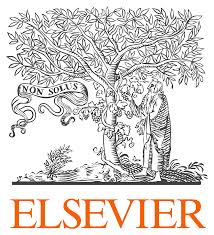Location
What is ScienceDirect
Elsevier’s leading platform of peer-reviewed scholarly literature.
University libraries and institutions offer ScienceDirect access to their communities of researchers.
Researchers, teachers, students, healthcare and information professionals use ScienceDirect to improve the way they search, discover, read, understand and share scholarly research.
Members:
Resources
Displaying 41 - 45 of 284Integrated landscape approaches in the tropics: A brief stock-take
Continued overexploitation of natural resources and the associated impacts of climate change threaten the sustainability and biodiversity of our global social-ecological systems. ‘Integrated landscape approaches’ are governance strategies that attempt to reconcile multiple and conflicting land-use claims to harmonize the needs of people and the environment and establish more sustainable and equitable multi-functional landscapes.
Cadastral data as a source for 3D indoor modelling
Despite the rapid development of indoor spatial data acquisition technology, there are currently no solutions that enable large-scale indoor spatial data acquisition due to several limiting factors that characterize the indoor space. This fact, together with the rapidly growing need for indoor models, is the main motivation for our research. The focus is on the study of the appropriateness of existing cadastral data for 3D indoor modelling.
The importance of different land tenure systems for farmers’ response to climate change: A systematic review
Climate change increasingly affects agricultural systems, making it necessary for farmers to adapt to changing climatic conditions. An important element shaping farmers’ adaptation decisions and their vulnerability is their respective land tenure system. Especially land tenure security can strongly influence farmers’ incentives for adapting to climate change.
Green infrastructure planning: Unveiling meaningful spaces through Foursquare users’ preferences
The design of efficient Green Infrastructure —GI— systems is a key issue to achieve sustainable development city planning goals in the twenty-first century. This study’s main contribution is the identification of potential GI elements to better align the environmental, social and economic perspectives in the GI design by including information about the use, activities, preferences and presence of people. To achieve this, user generated content from Location Based Social Network —LBSN— Foursquare is used as a complementary data source.
Not seeing the carbon for the trees? Why area-based targets for establishing new woodlands can limit or underplay their climate change mitigation benefits
Area-based targets for afforestation are a frequent and prominent component of policy discourses on forestry, land use and climate change emissions abatement. Such targets imply an expected contribution of afforestation to the net reduction of greenhouse gas emissions, yet the nature of afforestation undertaken and its geographical distribution means that there is considerable uncertainty over the eventual emission reductions outcomes.


